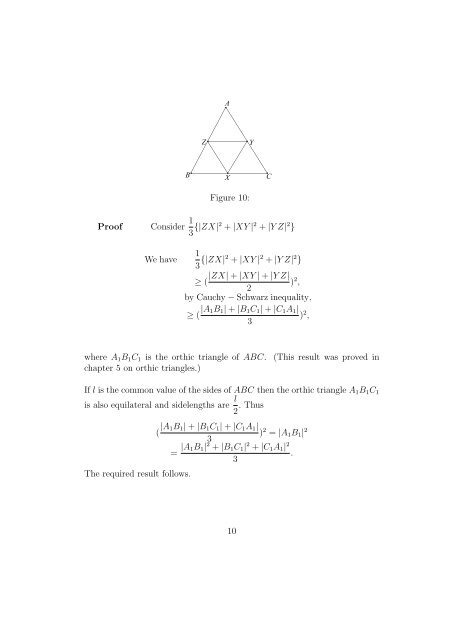6. Theorem of Ceva, Menelaus and Van Aubel.
6. Theorem of Ceva, Menelaus and Van Aubel.
6. Theorem of Ceva, Menelaus and Van Aubel.
Create successful ePaper yourself
Turn your PDF publications into a flip-book with our unique Google optimized e-Paper software.
Figure 10:<br />
Pro<strong>of</strong> Consider 1<br />
3 {|ZX|2 + |XY | 2 + |Y Z| 2 }<br />
We have<br />
1<br />
3 {|ZX|2 + |XY | 2 + |Y Z| 2 }<br />
|ZX| + |XY | + |Y Z|<br />
≥ ( )<br />
2<br />
2 ,<br />
by Cauchy − Schwarz inequality,<br />
≥ ( |A1B1| + |B1C1| + |C1A1|<br />
)<br />
3<br />
2 ,<br />
where A1B1C1 is the orthic triangle <strong>of</strong> ABC. (This result was proved in<br />
chapter 5 on orthic triangles.)<br />
If l is the common value <strong>of</strong> the sides <strong>of</strong> ABC then the orthic triangle A1B1C1<br />
is also equilateral <strong>and</strong> sidelengths are l<br />
. Thus<br />
2<br />
The required result follows.<br />
( |A1B1| + |B1C1| + |C1A1|<br />
)<br />
3<br />
2 = |A1B1| 2<br />
= |A1B1| 2 + |B1C1| 2 + |C1A1| 2<br />
.<br />
3<br />
10

















